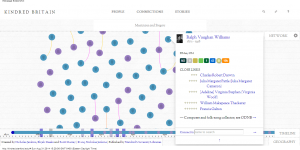In this blog post I will talk about my experience transcribing the letter I was assigned in James Merrill Linn’s diary. While transcribing this letter, I had the TextEdit and preview apps open side by side. I would read one word at a time in the diary and then write that word I transcribed into the text edit document. Once I got to the end of the line I would then hit enter and start my new line of transcribing. Sometimes I would scroll over and highlight the line I was on so that I wouldn’t get lost.
One of the difficulties I had was understanding Merrill Linn’s handwriting. I am not good at reading cursive to begin with so messy cursive was much harder to read. He was probably writing this while on the battle field and under tremendous stress. Another one of the difficulties I had was losing where I was when I would go from one line to the next. I would sometimes highlight the line but then sometimes I would double click on the page and the highlight would become un-highlighted. When I was following a sentence it was sometimes crooked because he was writing on unlined paper which made it harder to read. Another challenge I had was understanding the context because some words have different meanings and usages when compared with the current usage of certain words.
Below is an example of a word that was giving me trouble. I was torn between the word being in fact and in doubt but I went with in fact because it was most appropriate with the context.

Below is another example of where I had no idea what the word was. The word looked most like stump but I was a little confused because it didn’t really go with the context of the sentence. Part of the sentence read : However beaver a shepherd on a stump

I found the handwriting on this page very inconsistent. Some lines were very easy to read and others weren’t. When I got midway through the page I started to understand the context of the page which definitely helped to make the transcribing a little easier. Overall I believe this project helped to give me a greater understanding of the interpretive skills that are essential when working with the humanities.




